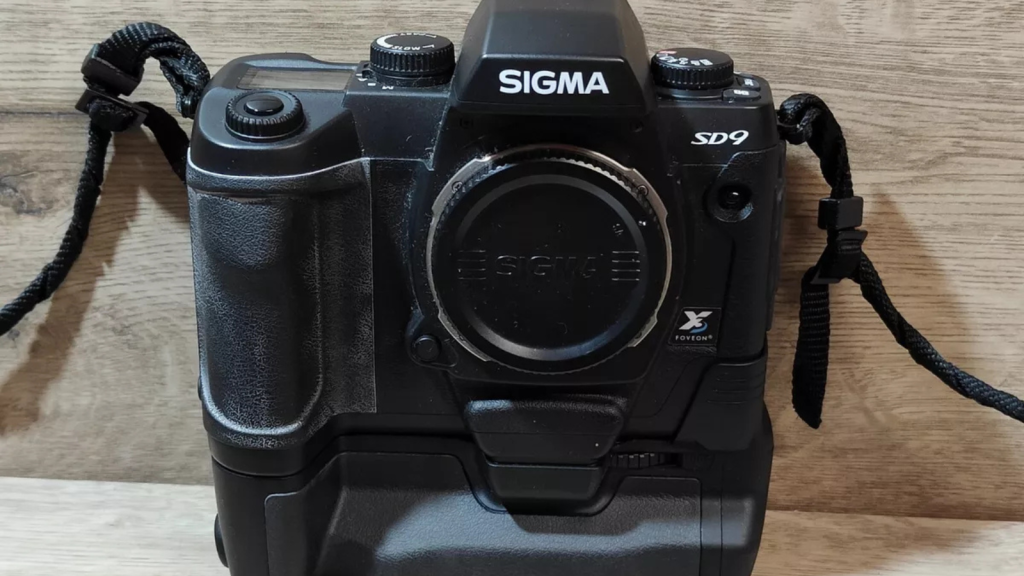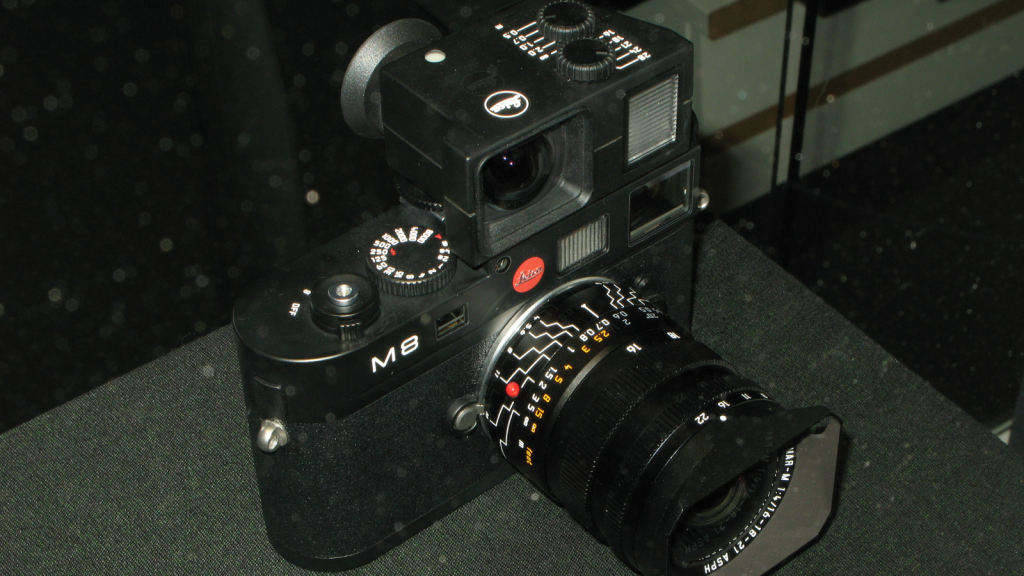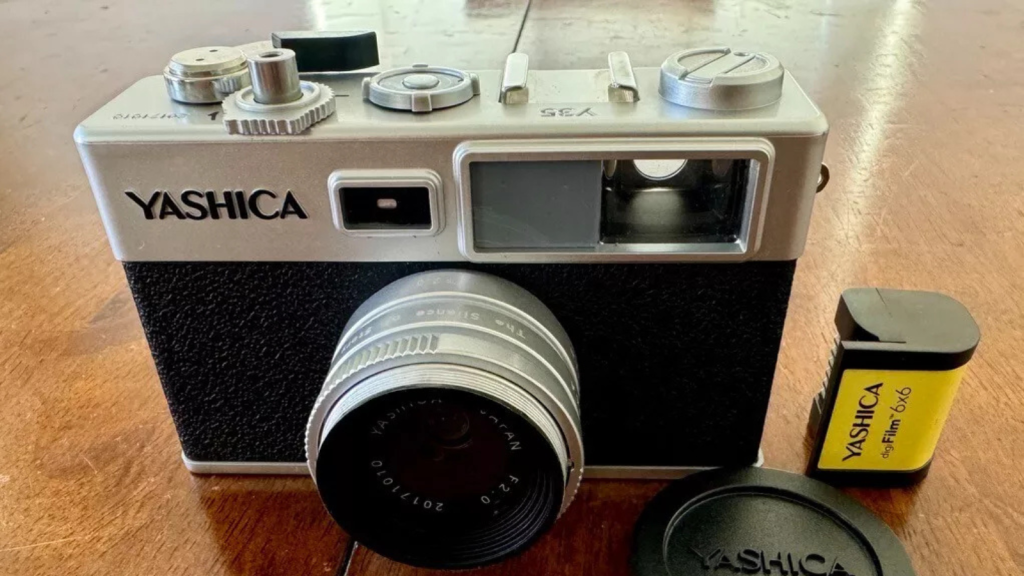In the world of photography, not all cameras are created equal. While some become legendary tools in the hands of skilled photographers, others are remembered for all the wrong reasons. From dodgy designs to temperamental technology, these cameras have left their users frustrated, disappointed, and occasionally with empty wallets. Whether you’re a seasoned shutterbug or just someone who enjoys the occasional snapshot, this list of photographic failures will make you appreciate your smartphone camera all the more. So, dust off your lens cloth and prepare for a journey through the darkroom of despair as we explore 14 cameras that should have stayed in their boxes.
Kodak Disc 4000

The Kodak Disc 4000 was meant to revolutionize photography, but instead, it became a cautionary tale. Launched in 1982, this camera used a flat disc of film rather than the traditional roll. The tiny negatives produced grainy, low-quality images that left users squinting at their prints. Despite Kodak’s marketing efforts, the Disc 4000 and its siblings quickly fell out of favor. Its awkward, plastic-heavy build further contributed to its reputation as a gimmick rather than a serious camera.
Minolta Vectis S-1

The Minolta Vectis S-1 was part of the ill-fated Advanced Photo System (APS) launch in the late 1990s. This camera promised versatility with its ability to switch between three print formats. However, the smaller film negatives resulted in lower quality images compared to 35mm. The complicated APS film cartridges were prone to jamming, adding another layer of frustration for photographers hoping for a seamless experience.
Canon RC-701

The Canon RC-701, introduced in 1986, was one of the first still video cameras aimed at consumers. While innovative for its time, it was plagued with issues. The camera could only store 50 images on its floppy disk, and the image quality was poor by even the most forgiving standards. The RC-701’s bulky design and reliance on fragile floppy disks made it impractical for field use, limiting its appeal to niche enthusiasts.
Hasselblad H1D

The Hasselblad H1D, launched in 2002, was meant to be a bridge between film and digital for professional photographers. However, this medium format camera suffered from slow operation and frequent software crashes. Its digital back, which was integral to the camera, became outdated quickly in the fast-evolving world of digital photography. Despite Hasselblad’s prestigious reputation, the H1D was seen as overpriced and underperforming compared to its rivals.
Ricoh RDC-i700

The Ricoh RDC-i700, released in 2000, tried to be both a camera and a mobile office device. It featured a touchscreen and the ability to send emails, but these features came at the cost of actual photographic quality. The camera’s low-resolution images and sluggish performance made it a tough sell even for early adopters of hybrid technology. Its hefty price tag further alienated users, making it a commercial failure.
Sigma SD9

Sigma’s SD9, introduced in 2002, was the first camera to use the much-hyped Foveon X3 sensor. This sensor promised better color accuracy, but in reality, it produced noisy images with limited dynamic range. The camera’s slow operation and limited ISO range made it impractical for many types of photography. Its proprietary RAW format required Sigma’s software, which frustrated users accustomed to more versatile workflows.
Leica M8

The Leica M8, released in 2006, was the company’s first digital rangefinder camera. Despite its prestigious brand name, the M8 was plagued with issues. It was notorious for its poor handling of infrared light, which required users to use special filters. Early firmware issues further compounded user frustrations, with many requiring frequent updates to fix basic functionality problems.
Nikon Coolpix 2000

The Nikon Coolpix 2000, introduced in 2002, was an entry-level digital camera that left much to be desired. Its 2-megapixel sensor was already outdated at launch, producing images that looked subpar even for the time. The camera’s slow autofocus and long shutter lag meant missed shots were common. Limited battery life and an inefficient flash system further frustrated users, especially in low-light situations.
Kodak EasyShare One

Kodak’s EasyShare One, launched in 2005, was meant to be the ultimate sharing camera, with built-in Wi-Fi for easy uploads. However, its complicated interface and unreliable wireless connectivity left users frustrated. The camera’s touchscreen was unresponsive, and its image quality was mediocre at best. Its inability to handle multiple simultaneous functions, like uploading and shooting, made it a cumbersome tool for everyday use.
Olympus E-300

The Olympus E-300, released in 2004, was an early entry in the company’s digital SLR line. Its unusual flat-top design, lacking a traditional pentaprism hump, made it stand out—but not in a good way. The camera’s awkward handling and subpar viewfinder made composition difficult. Its clunky menus and slow image processing times frustrated photographers looking for quick results.
Yashica Y35

The Yashica Y35, launched in 2018, promised to combine the nostalgic experience of film photography with digital convenience. Instead, it delivered poor image quality, a frustratingly slow shutter, and a clunky design. Users found its “DigiFilm” cartridges, meant to simulate different film types, to be gimmicky and impractical. Additionally, its plasticky build and flimsy controls made it feel more like a toy than a serious camera.
Agfa ePhoto CL30

The Agfa ePhoto CL30, released in 1999, was a lackluster early digital camera that frustrated users with its poor image quality and short battery life. Its clunky controls and cheap plastic construction made it feel like a toy rather than a serious photographic tool. The CL30’s incredibly slow startup and shutter lag ensured that even casual photographers were left disappointed.
Sony Mavica FD5

The Sony Mavica FD5, launched in 1997, was revolutionary in its use of floppy disks for storage, but that’s where its appeal ended. The camera’s bulk, slow operation, and low-resolution images made it impractical for most users. Each floppy disk could hold just a handful of low-quality images, forcing users to carry multiple disks for even a short photo session.
Samsung NV10

The Samsung NV10, introduced in 2006, tried to stand out with its unique touch-sensitive interface and sleek design. Unfortunately, the confusing controls and subpar image quality frustrated users. Its small sensor size, combined with aggressive noise reduction, resulted in blurry and washed-out photos, particularly in low-light conditions.
18 Everyday Things Amish Women Aren’t Allowed to Do

The Amish culture is known for its simple way of life and adherence to traditional values. While this lifestyle may seem appealing to some, there are certain restrictions that Amish women face that most modern women do not. Take a look at these things that we take for granted that are off-limits to Amish women.
Read More: 18 Everyday Things Amish Women Aren’t Allowed to Do
16 American Foods Brits Can’t Stand

Food preferences can vary wildly across cultures, and what’s considered a delicacy in one country might be seen as downright bizarre in another. This cultural divide is particularly evident when comparing American and British cuisines. While the two nations share a common language, their tastes in food can be worlds apart. From overly sweet concoctions to processed cheese products, there are certain American foods that many Brits find hard to stomach.
Read More: 16 American Foods Brits Can’t Stand
17 Old Wives’ Tales That Are Actually True

Old wives’ tales have been passed down through generations, often dismissed as mere superstition. However, many of these age-old beliefs are rooted in truth. From health tips to weather predictions, these stories from the past can surprise us with their accuracy. Here are 17 old wives’ tales that are actually true.
Read More: 17 Old Wives’ Tales That Are Actually True
Justin Hartman is a tech-savvy storyteller with a passion for gaming, movies, and all things automotive. Whether he's dissecting the latest gadgets, diving into cinematic classics, or geeking out over cars, trucks, and planes, Justin brings curiosity and expertise to every topic. When he's not writing, you’ll find him leveling up in his favorite games or cruising in search of his next automotive adventure.


